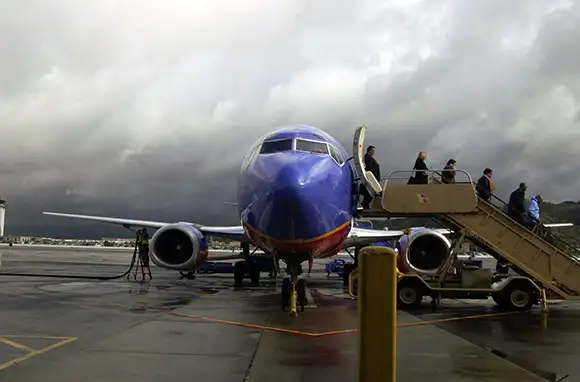
What keeps pilots awake at night? Reduced visibility, congested runways, raging weather, and sharp turns. These are just a few of the conditions that trouble pilots in some of the most challenging airports in America. While all major hubs in the U.S. are considered safe (in the words of pilot Patrick Smith, “There is no such thing as an unsafe commercial airport”), some hubs are far more hazardous than others.
We interviewed several professional pilots to find out which spots are particularly demanding for even experienced aviators. Here are 10 U.S. airports where pilots—and passengers—are in for hair-raising takeoffs and landings.
Image Gallery
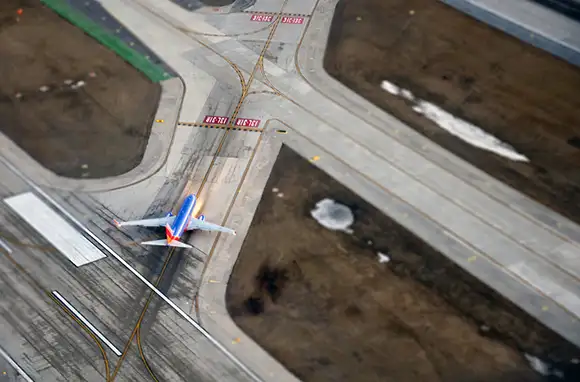
Chicago Midway International Airport, Chicago, Illinois
According to David Cenciotti, a freelance journalist and private pilot who blogs at The Aviationist (follow him on Twitter), severe winter weather in conjunction with short runways prove demanding for pilots jetting in and out of this Midwestern hub. Congestion is a big concern, too—Chicago Midway is commonly known as "the world's busiest square mile" (it covers roughly one square mile, natch). Cenciotti tells us, "The runway system, made of four intersecting runways and taxiways, can be extremely confusing for aircraft on the ground."

Chicago Midway International Airport, Chicago, Illinois
According to David Cenciotti, a freelance journalist and private pilot who blogs at The Aviationist (follow him on Twitter), severe winter weather in conjunction with short runways prove demanding for pilots jetting in and out of this Midwestern hub. Congestion is a big concern, too—Chicago Midway is commonly known as "the world's busiest square mile" (it covers roughly one square mile, natch). Cenciotti tells us, "The runway system, made of four intersecting runways and taxiways, can be extremely confusing for aircraft on the ground."
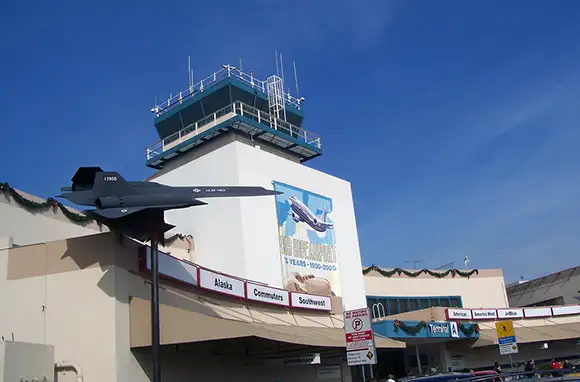
Bob Hope Airport, Burbank, California
A YouTube search of "Bob Hope, Burbank" yields videos of tricky, white-knuckle landings. Blame the lack of length: The runways at this hub are particularly—dangerously—short, and they're some of the smallest runways used for commercial flights in the country. Cenciotti cites the airport's compressed landing strips (as well as altitude—Bob Hope has an elevation of more than 700 feet) as cause for concern. In 2000, a Southwest flight overran the runway in Burbank and came to land near a gas station; no one was killed, but a few passengers sustained serious injuries.

Nantucket Memorial Airport, Nantucket, Massachusetts
We named Nantucket Memorial Airport one of the World's Scariest Airports due to its foggy conditions and low ceilings that reduce visibility and make navigating difficult. According to pilot Andrew Sitarz, "In a matter of minutes, fog can roll in and turn clear, blue skies gray. Sometimes you can't see anything until the last second; you break out of the fog, and the plane is landing."

Hartsfield-Jackson Atlanta International Airport, Atlanta, Georgia
Pilot Rand Peck, who blogs at A Life Aloft, finds taxiing around massive, congested runways at airports like Hartsfield-Jackson troublesome. The hub is, after all, the busiest airport on Earth. Says Peck, "Where I see the challenge is taxiing around large airports like ORD, JFK, SFO and ATL in rain, snow, or fog that reduces visibility. Most of these large airports have excellent lighting and signage, but they all have a few spots that are lacking."
To make matters worse, Hartsfield-Jackson is in a location that sees a lot of storms—it was one of our picks for America's Worst Weather Airports. Thunderstorms and other tempestuous weather conditions delay roughly 37 percent of flights coming out of this airport.
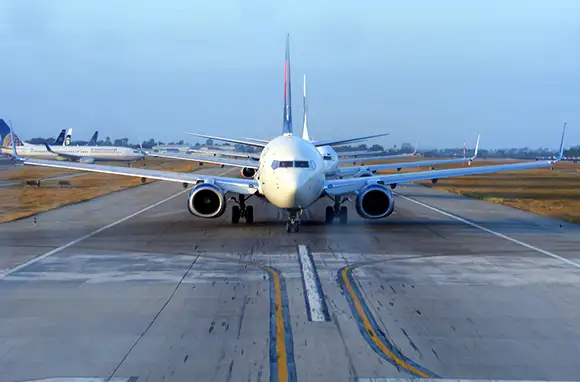
John Wayne Airport, Santa Ana, California
Since this hub is set close to the residential communities of Newport Beach, Irvine, Costa Mesa, and Tustin, officials have put in place strict noise rules for flights coming in and out of Santa Ana. In fact, according to OCair.com, John Wayne is one of the most noise-sensitive airports in the U.S.
What's the danger? For pilots, flying procedures that facilitate noise abatement are often difficult to pull off. Cenciotti explains that such procedures require "departing planes to perform a steep climb followed by a sudden thrust reduction that can be quite scary for passengers. An engine problem during initial climb could be extremely difficult to manage."

LaGuardia Airport, Queens, New York
Several pilots that we interviewed cite LaGuardia as a particularly challenging airport. Pilot and author Patrick Smith, who writes at Ask the Pilot, tells us, "Most of the planes [here] are smaller regional jets, but they are very busy, with complicated takeoff and landing patterns and short, crisscrossing runways." And it certainly doesn't help that the airport sits perilously close to the towering skyscrapers of Manhattan. According to Cenciotti, conditions are further complicated by the hub's close proximity to Midtown.
LaGuardia was also included on our list of World's Scariest Airports.

Los Angeles International Airport, Los Angeles, California
As the busiest origin and destination airport in the world, Los Angeles International is characterized by close-set runways and plenty of heavy congestion. But, somewhat surprisingly, weather conditions often complicate matters for pilots navigating LAX. Although Los Angeles is famous for its sunny, balmy climate, powerful winds can complicate landings. Cenciotti tells us, "Close parallel runways aside, Los Angeles International's main risk factor is in the gusty winds, up to 50 mph, which make crosswind landings tricky."

Reagan National Airport, Washington, D.C.
Picture a hub, flanked by no-fly zones and marked by intensely sharp turns: that's Reagan National, a nightmare for many an American aviator. According to Cenciotti, "Located between prohibited airspaces covering sensitive sites and government buildings such as the White House and the Capitol, Reagan National requires pilots to follow the Potomac River in the so-called River Visual [approach]. The aircraft then perform a final visual right turn (30 degrees to 40 degrees) at low altitude to line up with Runway 19."
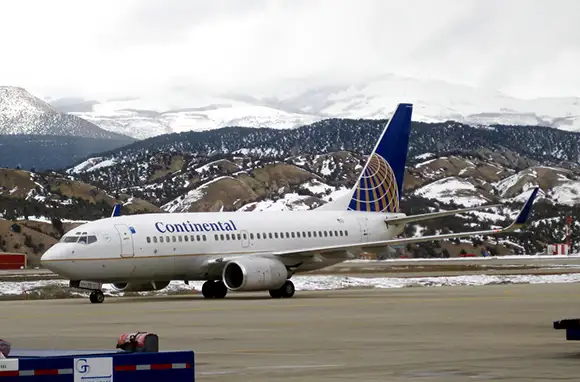
Eagle County Regional Airport, Vail, Colorado
The History Channel picked Eagle County Regional as one of the world's 10 most extreme airports—and the pilots we interviewed concur. "Poor weather, high approach, and high surrounding terrain make this airport a bit challenging," says Cenciotti. "Westward departures have high clearance altitudes due to nearby mountains. Generally speaking, all the other Colorado ski resorts and most Alaskan airports share the same risk factors."

Reno-Tahoe International Airport, Reno, Nevada
Here's more proof that precipitously high terrain can be quite a hazard for even experienced pilots: Reno-Tahoe, which has a runway elevation of more than 4,000 feet, was named as one of the trickiest airports to fly in and out of by Cenciotti. The hub's high elevation, in combination with the reduction in air density due to high temperatures (as temperature rises, air density drops), can make flying problematic—especially during summer. Says Cenciotti, "Reduction in air density affects aircraft performance: lower engine thrust, wing's lift, and propeller's efficiency. A plane taking off from Reno (as well as from any other high and hot airport) will require a longer takeoff roll as a result of reduced power production and slower acceleration."
More From Smartertravel:
We hand-pick everything we recommend and select items through testing and reviews. Some products are sent to us free of charge with no incentive to offer a favorable review. We offer our unbiased opinions and do not accept compensation to review products. All items are in stock and prices are accurate at the time of publication. If you buy something through our links, we may earn a commission.
Related
Top Fares From
Today's Top Travel Deals
Brought to you by ShermansTravel
Shop and Save with Country Inns...
Patricia Magaña
 Hotel & Lodging Deals
Hotel & Lodging Deals
$229 -- Chicago: Discounted Rates and...
Francesca Miele
 Hotel & Lodging Deals
$229+
Hotel & Lodging Deals
$229+
$188 -- Honolulu: Save on Oceanview...
Abigail Lamay
 Hotel & Lodging Deals
$188+
Hotel & Lodging Deals
$188+



